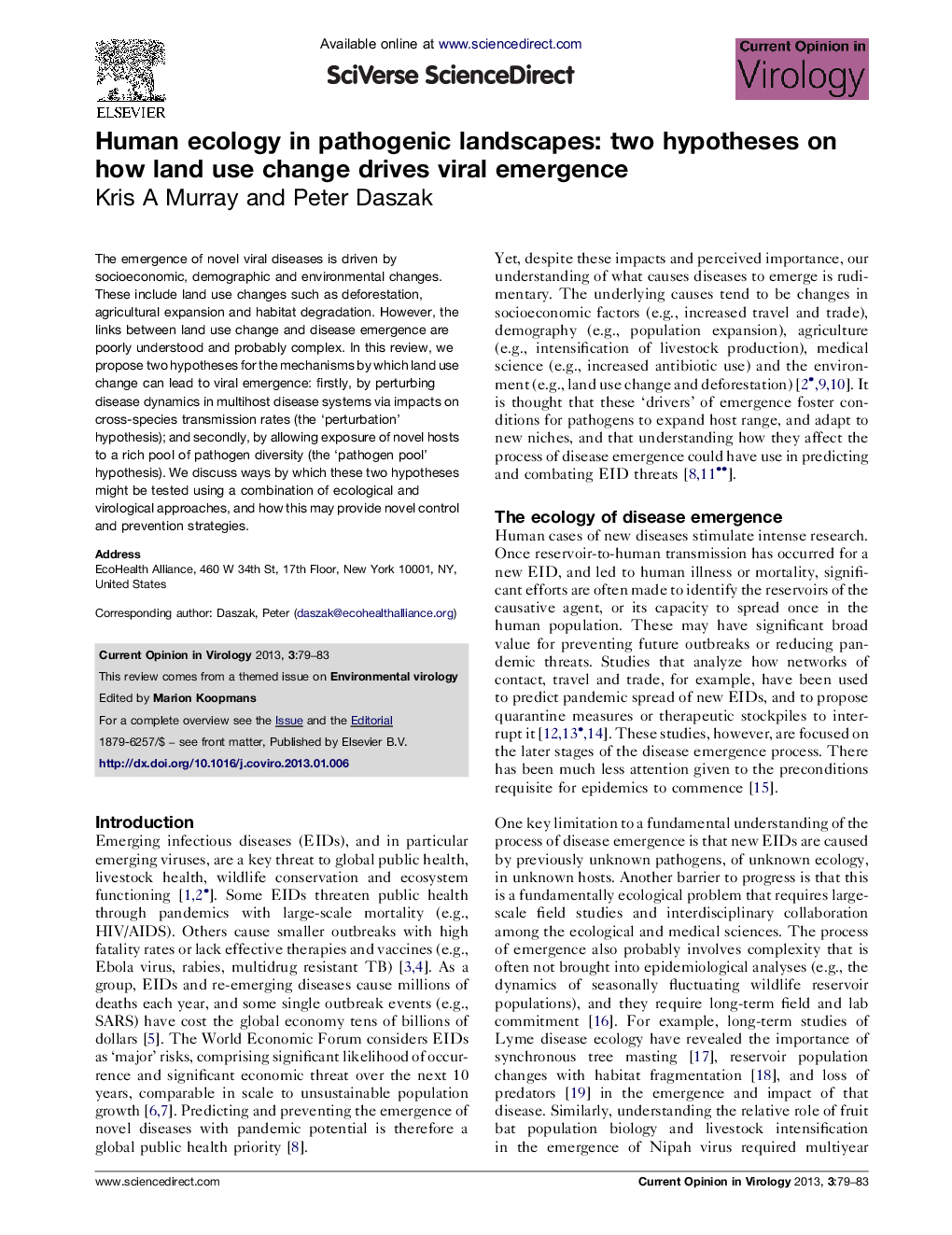| کد مقاله | کد نشریه | سال انتشار | مقاله انگلیسی | نسخه تمام متن |
|---|---|---|---|---|
| 2473528 | 1113020 | 2013 | 5 صفحه PDF | دانلود رایگان |

The emergence of novel viral diseases is driven by socioeconomic, demographic and environmental changes. These include land use changes such as deforestation, agricultural expansion and habitat degradation. However, the links between land use change and disease emergence are poorly understood and probably complex. In this review, we propose two hypotheses for the mechanisms by which land use change can lead to viral emergence: firstly, by perturbing disease dynamics in multihost disease systems via impacts on cross-species transmission rates (the ‘perturbation’ hypothesis); and secondly, by allowing exposure of novel hosts to a rich pool of pathogen diversity (the ‘pathogen pool’ hypothesis). We discuss ways by which these two hypotheses might be tested using a combination of ecological and virological approaches, and how this may provide novel control and prevention strategies.
► Emerging viral zoonoses are a critical threat to public health and are driven by socioeconomic and environmental changes.
► Our understanding of how environmental changes, in particular land use change causes viruses to emerge is rudimentary.
► We propose two hypotheses on how land use change causes disease emergence.
► These are: the ‘perturbation’ hypothesis, and the ‘pathogen pool’ hypothesis.
► We discuss how these could be tested, using a combination of virological and community ecology studies.
Journal: Current Opinion in Virology - Volume 3, Issue 1, February 2013, Pages 79–83